11. A Man Vanishes (Shohei Imamura, 1967)
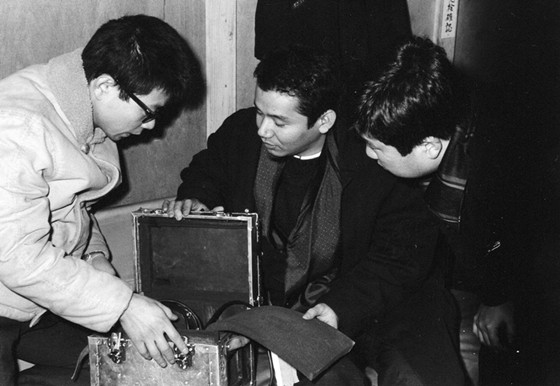
The film starts as a documentary of sorts, regarding the disappearance of plastic salesman Oshima that occurred two years previously. Shohei Imamura and his crew follow his fiancé Yoshie and actor Shigeru Tsuyuguchi in their investigation of Oshima’s fate.
Initially, Imamura presents a picture that looks like an examination of a phenomenon that occurred in the 60s in Japan, with thousands of Japanese simply disappearing each year, leaving no trace.
However, as the movie progresses, his focus turns elsewhere, as does Yoshie’s, who falls in love with Tsuyuguchi during the investigation, even confessing her feelings to him at one point.
Furthermore, Imamura eradicates the difference between reality and film, as with the scene when the walls of the decor crumble during the film, only to reveal the presence of a soundstage.
12. Gozu (Takashi Miike, 2003)
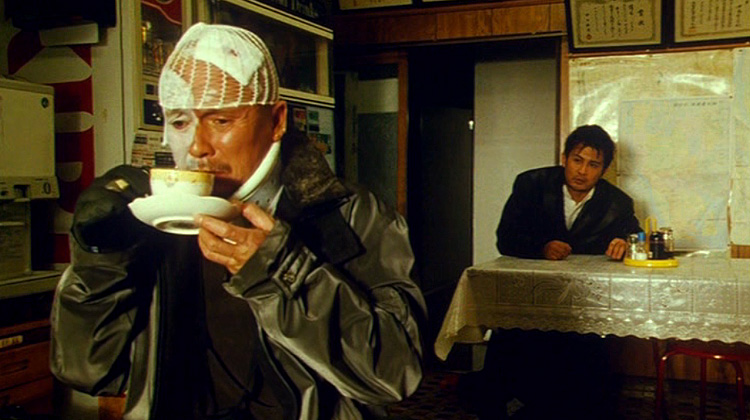
Young Yakuza Minami receives an order from his leader to kill his partner, Ozaki, who seems to have succumbed to madness. Minami reluctantly agrees, as he has been a close friend of his. However, during the travel to Nagoya and after an accident, Ozaki dies. A perplexed Minami makes a stop to ask the leader for further instructions but the body disappears.
Minami then proceeds to ask Nagoya’s inhabitants about the body, but not only he does not receive any kind of help, but his search also becomes even more difficult.
Takashi Miike directs a film that transforms into a preposterous odyssey after a point, with the director once more including every surreal, extreme, and violent idea he carries in his head.
In that fashion, the film presents a crazy hotel owner and her autistic brother, a graveyard of cars where those who died in car accidents are being skinned, a Minotaur, a spoon fetish, and an absurd sex scene that occurs simultaneously with a birth. All of the above, along with the non-linear narration and the permeating surrealism, result in a film that only Miike could conceive and complete.
13. Electric Dragon 80.000 V (Sogo Ishii, 2001)
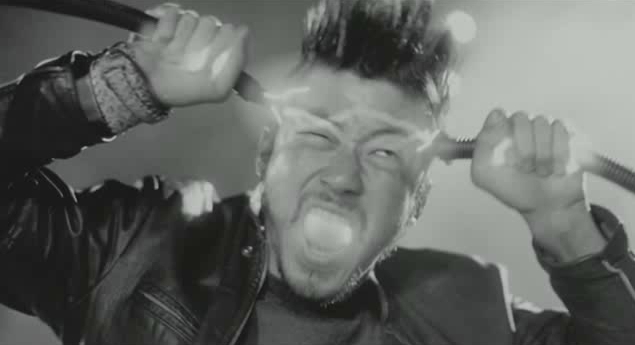
An accident in a high voltage electric pylon bestows the ability upon Dragon Eye Morrison to channel and conduct electricity, but also injects him with an extremely violent attitude he usually defuses on his electric guitar.
In another part of the city, a TV technician with the same abilities named Thunderbolt Buddha is waging a war against the mob, vigilante style. When both men learn of each other’s existence, their duel becomes inevitable.
Sogo Ishii directs a 55-minute black and white film whose aesthetics are very similar to “Tetsuo”. In that fashion, the movie looks like an extreme music video with its chaotic and surrealistic course through the rooftops and the straits of a grey-colored Tokyo, which ends up in an explosive, violent, and terrifying audiovisual whirl.
The extreme music video atmosphere is intensified by the music provided by Sogo Ishii’s industrial noise-punk band, which actually used the film as an audiovisual background during their shows.
14. Bullet Ballet (Shinya Tsukamoto, 1998)
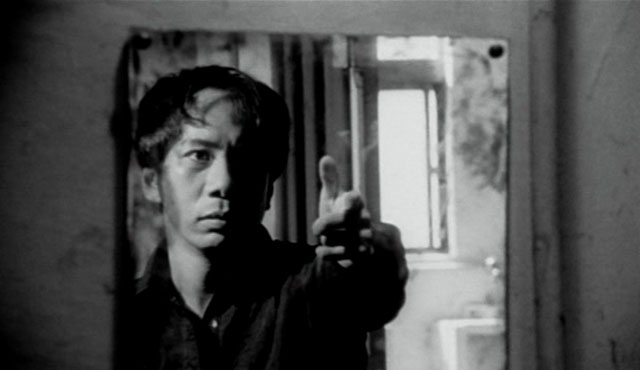
Goda is a TV commercial director, who one day finds his fiancé dead after committing suicide with a gun. Tortured by mixed feelings of shock and guilt, he starts to develop a mania with the suicide weapon and embarks on a trip to acquire the exact same model.
However, due to Japan’s strict gun control laws, his quest becomes very difficult and subsequently leads him to the Tokyo underground with a gang of delinquents headed by a girl named Misato, whose members had mugged and humiliated him in the past. Eventually, he gets tangled in the gang’s war with their opponents.
Shinya Tsukamoto directs a film that initially focuses on Goda’s (played by Tsukamoto) obsession with guns and the violence they represent, and the amoral game he and Chisato play with death. However, after a point, the paranoia tones down and the movie becomes a peculiar gangster caricature.
The intentional mess and chaos of all his productions appear here as well, as do his visual aesthetics, with the extensive use of handheld cameras and distinct black and white images.
15. Owl (Kaneto Shindo, 2003)

The film is based on an actual incident that occurred in 1980 in a remote village in northern Japan that accommodated 20 families who had returned from Manchuria after World War II. Amid the ruins of the village, the bones of nine bodies were found, with the last family known to live there consisting of a woman and her teenage daughter who had disappeared at the time of the discovery.
Kaneto Shindo was inspired from the incident, a story about a mother and a daughter who conceive and execute a plan based on sex and murder in order to face their dramatic living situations.
The film is almost exclusively shot on a single set (due to the 91-year-old Shindo’s mobility problems), the interior of the women’s house, and is actually a succession of people coming in, being seduced, having sex, and then being murdered, until a policeman arrives.
Shinobu Otake, Shindo’s latest muse, gives a great performance in the role of the mother.
16. Black Kiss (Macoto Tezuka, 2004)
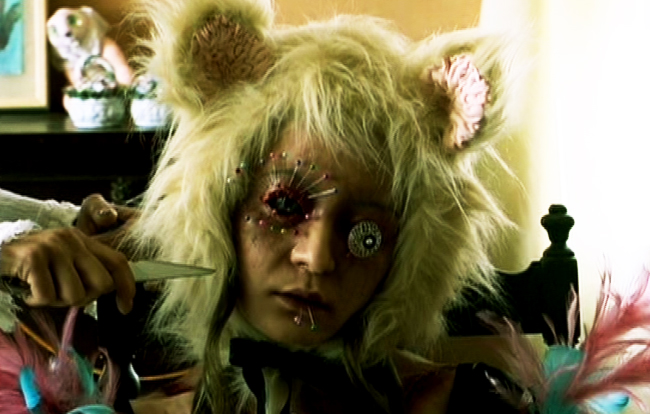
Asuka is an aspiring model who travels to Tokyo to pursue her career choice. Without having a place to live, she ends up staying with Kasumi, an older ex-model who is not very happy with the arrangement. During the night, Asuka becomes a witness to a brutal murder in an adjoining room, which signals the beginning of a series of murders.
Macoto Tezuka directs a film that starts out like a regular crime thriller, similar to the films of Alfred Hitchcock and Dario Argento, but it quickly takes a completely different turn, becoming a parody of sorts while losing all sense of seriousness and coherence.
Among all these, Tezuka also included half-Japanese models, Haitian voodoo, and European themes, while focusing on the concept of coincidence, in one of the first pictures shot exclusively on HD camera.
17. Stop the Bitch Campaign: Hell Version (Kosuke Suzuki, 2004)
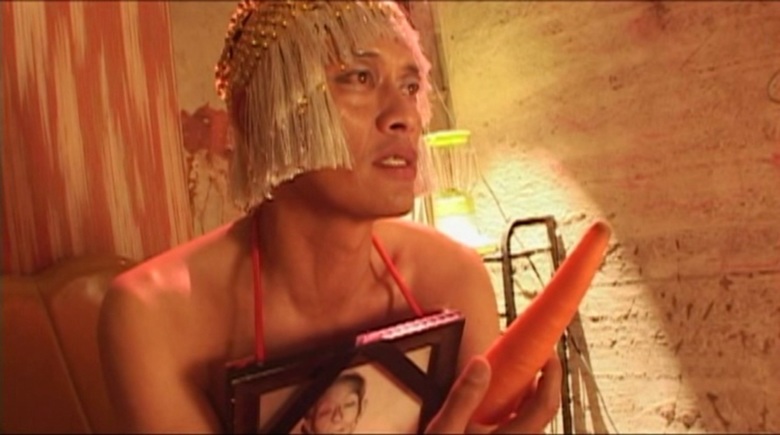
This is the second part of the trilogy based on the manga by Tetsuya Koshiba and Hideo Yamamoto, who was also responsible for the “Ichi the Killer” manga.
The film deals with the phenomenon of “Enjo Kosai”, where high school girls prostitute themselves to older men in order to buy clothes, smartphones, and other things they could not buy in their capacity as students.
The film, however, takes a step forward, since it tells the tale of Kuni, a man who is set on punishing those girls by having sex with them and not paying, while calling his operation the Stop the Bitch campaign. Eventually he steps in a “hotel” where every girl is dressed as a middle school student and pays to spend the night with all of them. And he has brought vegetables.
Kosuke Suzuki directs a 57-minute film that looks like a perverted comic, filled with insanity and erotic preposterousness, including a woman dressed as a nurse that takes care of a man dressed as a baby.
18. Bodyguard Kiba (Takashi Miike, 1993)
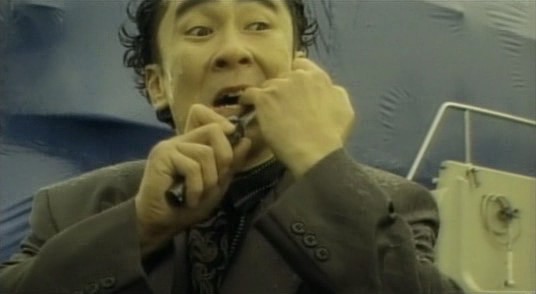
One of the best films from Takashi Miike’s straight-to-video days, “Bodyguard Kiba” tells the story of Junpei, a former Yakuza who has stolen 500 million yen from his boss. He manages to escape their punishment, but ends up in jail. After five years, he is released and hires bodyguard Kiba to protect him, while he accesses the hidden loot and finds his girlfriend.
From that point on, the movie is an endless succession of battles between Kiba and the Yakuza, and a bunch of students from a dojo who are infuriated by Kiba’s allegations that his karate is better than theirs.
Among the brutal and nonstop violence, Miike managed to include the theme of male friendship and even some plot twists, in one of the less gory films he ever shot.
19. Kabamaru the Ninja (Norifumi Suzuki, 1983)
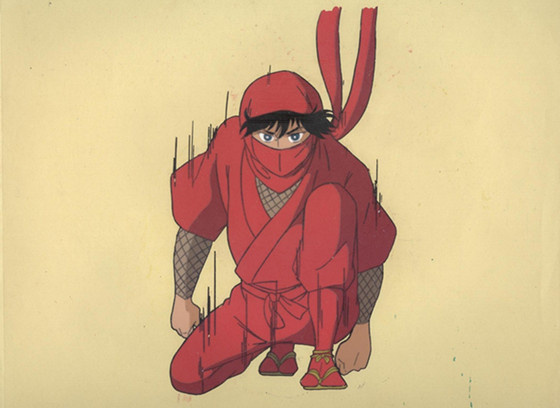
The film is based on the homonymous manga by Yu Azuki, that also spawned an anime that is considered cult in Greece, Cyprus, Italy and France.
The story revolves around Kagemaru Igano, who was raised and trained in ninja ways by his overtly strict and violent grandfather. The boy is nicknamed Kabamaru (hippo’s mouth) due to his insatiable appetite. When his grandfather dies, an elderly friend of his named Ran Ookubo decides to take care of the boy.
Kabamaru has now to adjust his utterly unrefined ways to the aristocratic urban lifestyle, while he is caught in a lethal rivalry between Kingyoku School and Ogyoku School.
Norifumi Suzuki took a break from his usual exploitation motifs to direct a nonsensical action comedy that presents a preposterous visage to the whole ninja concept. Enormous amounts of food, ridiculous teenage romance, and extremely unusual (and bold) characters are just a few of the themes and notions the film includes.
Cult favorite Sonny Chiba has a role in the film, as does the unrecognizable Hiroyuki Sanada.
20. RoboGeisha (Noboru Iguchi, 2009)
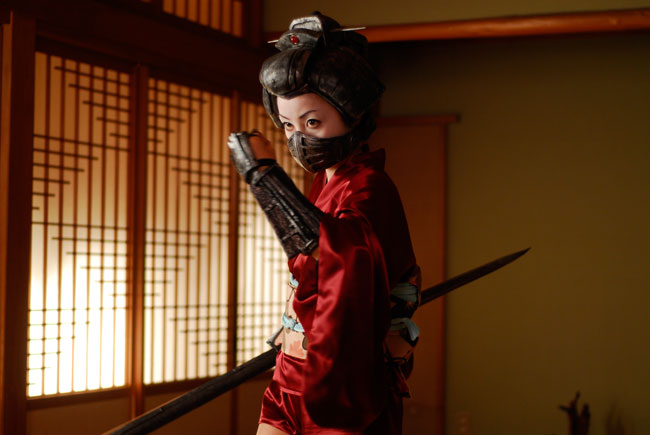
The film revolves around two sisters, Kikue and Yoshie Kagusa. The first one is renowned for her beauty, but constantly abuses her little sister, who works in the same teahouse, for her lack of grace and potential of becoming a great geisha.
Their lives change when the heir of Kageno Iron Corporation kidnaps and forces them to become lethal assassins, as part of his geisha army. The sisters ascend the ranks quickly, as they change their human parts with deadly mechanical ones.
The film brought together the crème de la crème of Japanese splatter, including writer and director Noboru Iguchi, visual effects specialist Tsuyoshi Kazuno, and special effects specialist Yoshihiro Nishimura (the three of them worked together on “The Machine Girl”), as well as actress Asami.
Unavoidably, the result is an action comedy with plenty of splatter and horror that borders on total insanity, with concepts like a bomb that is 17 times stronger than the atomic bomb, goblin assassins, a robot-castle, and a butt-sword duel, plus the usual bloodbaths and incoherent scenario.
“RoboGeisha” is “trash” film at its best, and a true contemporary cult masterpiece.